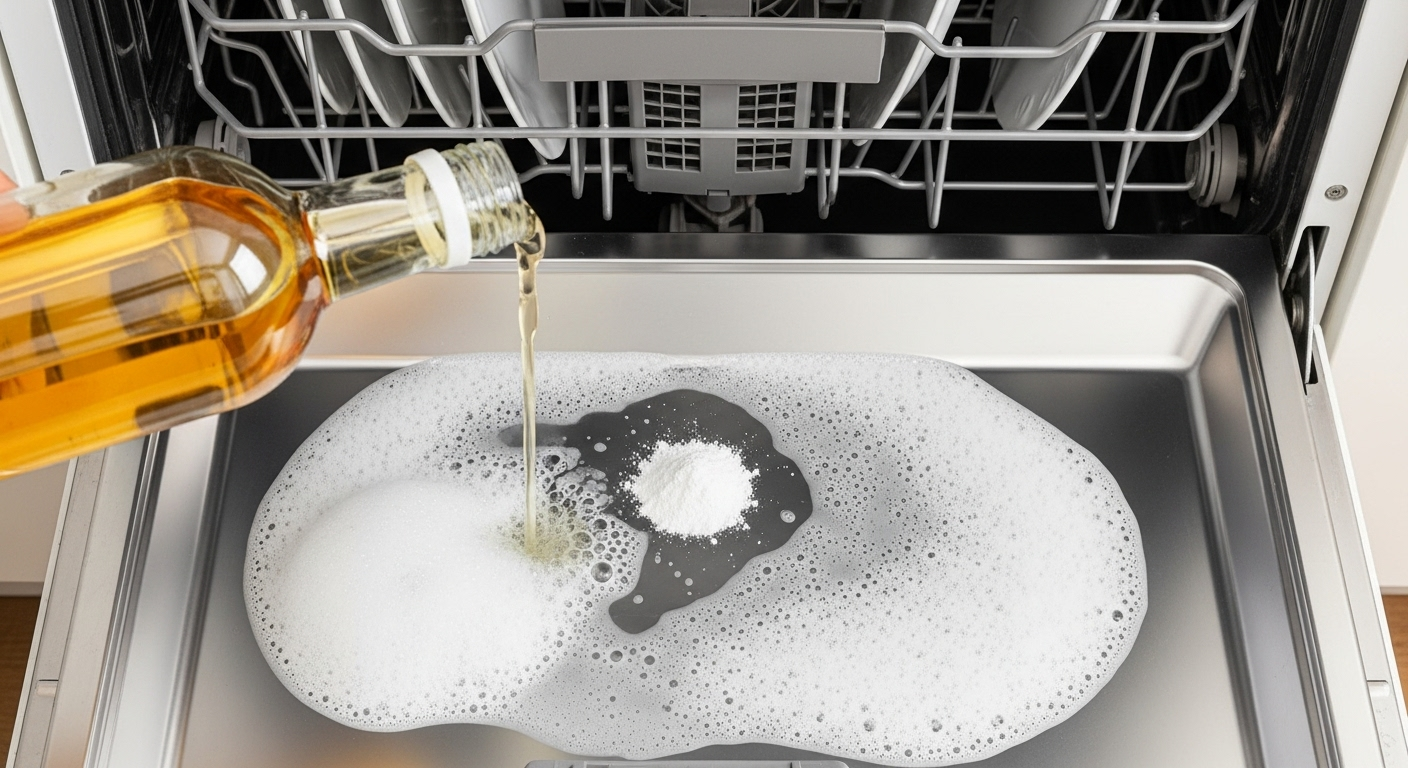One's acidic, the other alkaline - don't they just cancel each other out?
Cleaning power here relies on simple acid–base chemistry—and the clever way we use each ingredient in sequence rather than mixing them outright. Follow the steps below to harness both chemical dissolution and mechanical lift for a spotless dishwasher.
1. What Happens When You Mix Vinegar and Bicarbonate
White wine vinegar is typically around 5–7% acetic acid (CH₃COOH) in water, making it an acid. Bicarbonate of soda (sodium bicarbonate, NaHCO₃) is a mild alkali. When they meet:
- The acetic acid donates a proton (H⁺) to the bicarbonate ion (HCO₃⁻).
- This creates carbonic acid (H₂CO₃), which immediately breaks down into water (H₂O) and carbon dioxide gas (CO₂).
- The fizz you see is the rapid release of CO₂ bubbles, which physically help dislodge dirt and grime.
The overall reaction is:
CH₃COOH + NaHCO₃ → CH₃COONa + H₂O + CO₂
2. Why We Use Them in Stages, Not All at Once
- Run a hot cycle with vinegar alone: the undiluted acetic acid (pH below 3) penetrates limescale, dissolves mineral deposits, breaks down grease and kills bacteria.
- Then sprinkle bicarbonate of soda: it reacts with any residual acid, fizzing gently to lift stubborn grime, while its mild alkalinity (pH around 8) emulsifies fats and neutralises odours.
3. The Cleaning Benefits of the Sequential Approach
- Acid action: Vinegar’s low pH dissolves calcium carbonate scale and disrupts bacterial cell walls.
- Mechanical lift: CO₂ bubbles act like millions of tiny scrubbers, loosening stuck-on residue.
- Alkaline boost: Bicarbonate’s gentle alkali helps saponify remaining fats and leaves the interior smelling fresh.
4. Why They Don’t “Cancel Out” Completely
- By the time fizz occurs, the acid has already cleared scale and grease.
- The subsequent bubbling targets leftover debris and reaches nooks and crannies.
- You end up with a gentle alkaline rinse that discourages odours and dissolves any fatty residues.
5. Practical Take-Home
- Don’t mix them in one go: you’ll neutralise most of the acid’s cleaning power.
- Use vinegar first at full strength: let it tackle limescale and grease during a hot empty cycle.
- Follow with bicarbonate: sprinkle it in once the drum has cooled, run a short cycle, then wipe clean.
